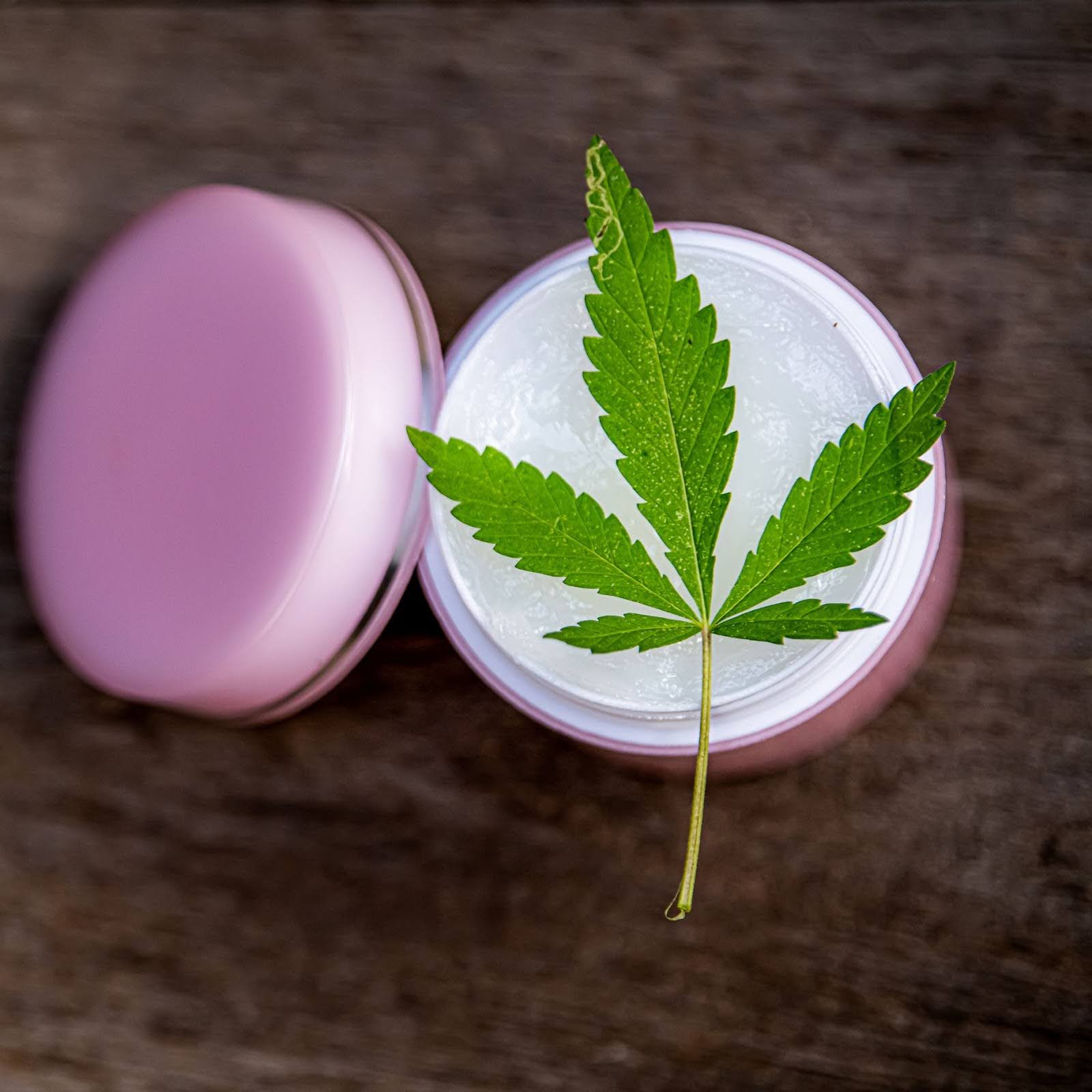Key Takeaways:
- CBD's Role in Pain Management: CBD can help manage plantar fasciitis pain through its anti-inflammatory properties and pain relief capabilities, offering a natural alternative to traditional painkillers.
- Choosing the Right Product: Selecting high-quality, third-party-tested CBD products is crucial for safety and effectiveness. Topical applications are particularly beneficial for localized relief from plantar fasciitis pain.
- Integrating CBD Into Holistic Care: CBD is most effective when used as part of a comprehensive approach to foot health, including regular stretching, wearing supportive footwear, and maintaining a healthy weight. Explore the natural path to wellness with Chill Frog CBD. Discover our range of CBD products designed for your holistic health journey. Start feeling your best today.
Foot health significantly affects our daily lives, with plantar fasciitis being a common source of foot pain that can hinder everyday activities. Recently, CBD has gained attention as a potential remedy for managing such pain, including that caused by plantar fasciitis. This article aims to explore the effectiveness of CBD for plantar fasciitis pain, offering insights into its benefits, how to choose the right CBD products and practical usage tips. By providing clear, evidence-based information, we seek to help readers understand how CBD might fit into their foot healthcare regimen, enabling them to make informed decisions about its use.
Step into a world of calm and comfort with Chill Frog CBD. Our premium CBD products are your allies in wellness. Experience the difference now.
Embrace Your Wellness Journey With Chill Frog CBDElevate your wellness routine with the natural support of Chill Frog CBD. Our carefully curated products are designed to harmonize with your lifestyle, offering a gentle, holistic boost to your day.
Are You Ready to Elevate Your Wellness Routine? Browse Chill Frog CBD's Premium Selection Now |
Understanding Plantar Fasciitis
What Is Plantar Fasciitis?
Plantar fasciitis is an inflammation of the plantar fascia, a thick band of tissue in the foot. This condition causes heel pain, often felt most strongly in the morning. It affects both active and sedentary individuals, with varying degrees of severity. The pain is typically localized around the heel and may improve with mild activity. It's a common issue that can persist without proper management or treatment.

Diagnosing Plantar Fasciitis
Diagnosing plantar fasciitis involves a review of symptoms and physical examination by a healthcare provider. Imaging tests like MRIs or X-rays are rarely necessary but can rule out other conditions. Early diagnosis is crucial for effective management. The focus is on identifying the characteristic pain and stiffness associated with the condition. Prompt diagnosis helps in adopting appropriate treatment strategies early on.
Causes And Symptoms Of Plantar Fasciitis
Risk Factors
Several factors increase the risk of plantar fasciitis, including age, certain exercises, obesity, and job-related activities. Foot structure, like high arches or flat feet, also plays a role. Understanding these risk factors can help in preventing the condition. Activities that place a lot of stress on the heel and attached tissue, like long-distance running, can trigger plantar fasciitis. Addressing these risks early can mitigate the onset or severity of symptoms.
Symptoms To Watch For
The primary symptom of plantar fasciitis is a sharp, stabbing pain in the bottom of the foot near the heel. This pain is often worse in the morning or after prolonged periods of rest. It might decrease with movement but can return after standing for a long time. Recognizing these symptoms early is key to managing and treating the condition. Pain location and timing are critical diagnostic clues for plantar fasciitis.
How CBD Can Help With Plantar Fasciitis Pain?
CBD's Anti-Inflammatory Properties
CBD's anti-inflammatory effects can reduce the inflammation that exacerbates plantar fasciitis pain. By interacting with the body's endocannabinoid system, CBD helps modulate the inflammatory response. This can lead to a decrease in swelling and discomfort in the foot. CBD offers a natural alternative to traditional anti-inflammatory medications. Its use targets the inflammation at the source, potentially providing relief from the condition's painful symptoms.
Pain Relief
CBD is known for its pain-relieving properties, making it a beneficial treatment for plantar fasciitis. It influences pain pathways and receptor activity, reducing the perception of pain. This action can provide significant relief from the sharp, often debilitating pain associated with plantar fasciitis. CBD's ability to manage pain without the side effects of prescription painkillers makes it an attractive option. Its natural pain relief is particularly appealing for those seeking alternatives to traditional medications.
Promoting Recovery
In addition to pain management, CBD may facilitate the healing process of plantar fasciitis. Its anti-inflammatory and analgesic effects can make it easier to engage in rehabilitative exercises. This can accelerate the recovery process, reducing downtime and improving mobility. By reducing pain and inflammation, CBD supports a more active approach to recovery. Engaging in gentle, targeted exercises can strengthen the foot, aiding in the healing of plantar fasciitis.
Choosing The Right CBD For Plantar Fasciitis
Types Of CBD Products
For plantar fasciitis, topical CBD products, such as creams and lotions, are ideal for localized treatment. These products allow for direct application to the affected area, providing targeted relief. Oils and capsules are also available but might be better suited for systemic relief. Choosing the right form depends on personal preference and specific needs. Topical applications are generally recommended for direct, localized pain relief.
Transform your wellness practice with Chill Frog CBD. Our products are a bridge to a life of balance and calm. Take the first step towards a better you.

Quality And Purity
Selecting high-quality, pure CBD products is essential for effectiveness and safety. Products should be third-party tested to verify their cannabinoid content and purity. Organic and non-GMO labels can also indicate higher quality. Checking for these certifications can help ensure you're getting a clean, effective product. Quality and purity directly impact the therapeutic effectiveness of CBD for plantar fasciitis.
Concentration And Dosage
The concentration of CBD in a product affects its potency and, consequently, its effectiveness. Starting with a lower dose and gradually increasing allows you to find the optimal dosage for pain relief. It's important to follow manufacturer guidelines and consult with a healthcare provider for personalized advice. Finding the right concentration and dosage can maximize the benefits of CBD for plantar fasciitis pain. Adjusting dosage based on personal response is key to effective treatment.
How To Use CBD For Plantar Fasciitis?
Application Methods
Applying CBD topically to the heel and bottom of the foot targets the pain of plantar fasciitis directly. This method allows CBD to act where it's most needed, offering localized relief. For systemic effects, ingesting CBD oils or capsules can provide broader pain relief. The choice between topical and systemic use depends on the severity and nature of your symptoms. Consistent application or consumption as directed can lead to noticeable improvements.
Frequency Of Use
The frequency of CBD application should be adjusted based on individual pain levels and product concentration. Starting with once or twice daily applications is common, with adjustments made according to the pain relief experienced. Listening to your body and observing how it responds to CBD will guide the adjustment of usage frequency. Consistency is crucial for achieving the best results. Regular use as per guidelines ensures sustained relief from plantar fasciitis symptoms.
Combining CBD With Other Treatments
CBD is most effective when used as part of a comprehensive treatment plan for plantar fasciitis. This includes combining CBD with stretching exercises, proper footwear, and weight management. A holistic approach addresses both symptoms and underlying causes. Such integration maximizes the benefits of each treatment method. This combination can enhance overall foot health, offering a robust strategy against plantar fasciitis.
Final Thoughts On CBD For Plantar Fasciitis Pain
CBD presents a promising option for those suffering from plantar fasciitis pain. Its anti-inflammatory and pain-relieving properties can provide significant relief, potentially speeding up the recovery process. Choosing the right product, applying it correctly, and combining CBD with other treatments can maximize its effectiveness. As with any supplement, consulting with a healthcare professional before starting CBD is crucial. This ensures it fits safely and effectively into your overall treatment plan.
Let Chill Frog CBD guide you to a more serene state. With our commitment to quality, your wellness is in good hands. Explore our collection today.
Read Also:
- CBD Showdown: Isolate Vs Full Spectrum For Your Wellness Needs
- Smoothie Revolution: Boost Your Health With CBD Powder
- Navigating Menopause With Ease: The Role Of CBD In Symptom Management
Frequently Asked Questions About CBD For Plantar Fasciitis Pain
Is CBD legal to use for plantar fasciitis pain management?
Yes, CBD derived from hemp with less than 0.3% THC is federally legal in the United States. However, laws can vary by state, so it's important to check local regulations.
Can CBD cure plantar fasciitis?
CBD is not a cure for plantar fasciitis but can be an effective part of managing symptoms such as pain and inflammation.
How long does it take for CBD to work on plantar fasciitis pain?
The time it takes for CBD to provide relief can vary. Some users report immediate relief, while for others, it may take several days to notice a difference.
Will using CBD for plantar fasciitis cause any psychoactive effects?
CBD does not produce psychoactive effects like THC. Using CBD for plantar fasciitis should not make you feel "high."
How often should I apply CBD products for plantar fasciitis pain?
Start with the manufacturer's recommended dosage and adjust based on your pain level. It's common to apply topical CBD 1-2 times daily.
Can I use oral CBD products instead of topicals for plantar fasciitis?
Yes, oral CBD products like oils and capsules can also provide systemic pain relief and may be used in conjunction with topicals for comprehensive management.
Are there any side effects of using CBD for plantar fasciitis?
CBD is generally well-tolerated. Possible side effects include fatigue, changes in appetite, and gastrointestinal discomfort.
Can I use CBD products for plantar fasciitis while pregnant or nursing?
There is limited research on CBD use during pregnancy or breastfeeding. It's important to consult with a healthcare provider before using CBD in these situations.
Does the concentration of CBD in a product affect its effectiveness for plantar fasciitis pain?
Higher concentrations of CBD may offer more significant relief for acute pain, but individual responses can vary. Start with a lower dose and adjust as needed.
Can CBD interact with medications I’m taking for plantar fasciitis or other conditions?
CBD can interact with some medications by affecting how your body processes them. Always talk to your doctor before starting CBD, especially if you take other medications.
Sources:
- Tahririan, M. A., Motififard, M., Tahmasebi, M. N., & Siavashi, B. (2012). Plantar fasciitis. Journal of Research in Medical Sciences: The Official Journal of Isfahan University of Medical Sciences, 17(8), 799–804. https://www.ncbi.nlm.nih.gov/pmc/articles/PMC3687890/
- Petraglia, F. (2017). Plantar fasciitis in athletes: diagnostic and treatment strategies. A systematic review. Muscle, Ligaments and Tendons Journal, 7(1), 107. https://doi.org/10.11138/mltj/2017.7.1.107
- Gupta, M., Singh, N., Gulati, M., Gupta, R., Sudhakar, K., & Kapoor, B. (2021). Herbal bioactives in treatment of inflammation: An overview. South African Journal of Botany, 143, 205–225. https://doi.org/10.1016/j.sajb.2021.07.027